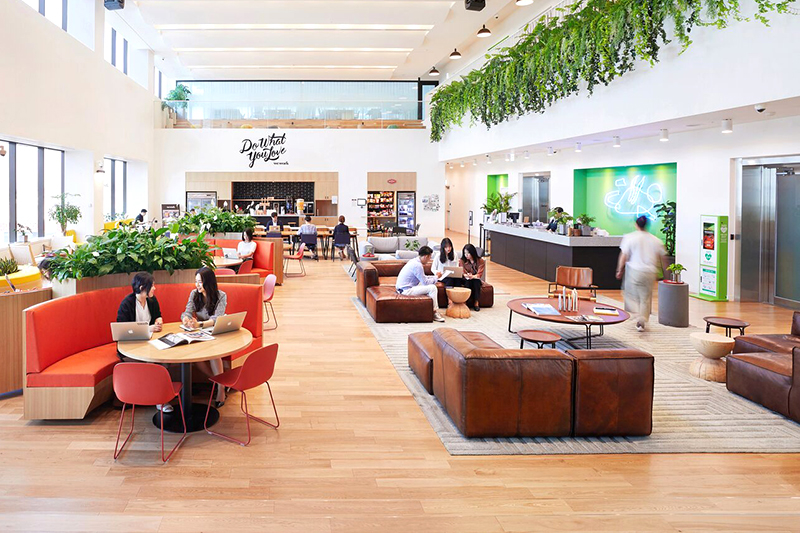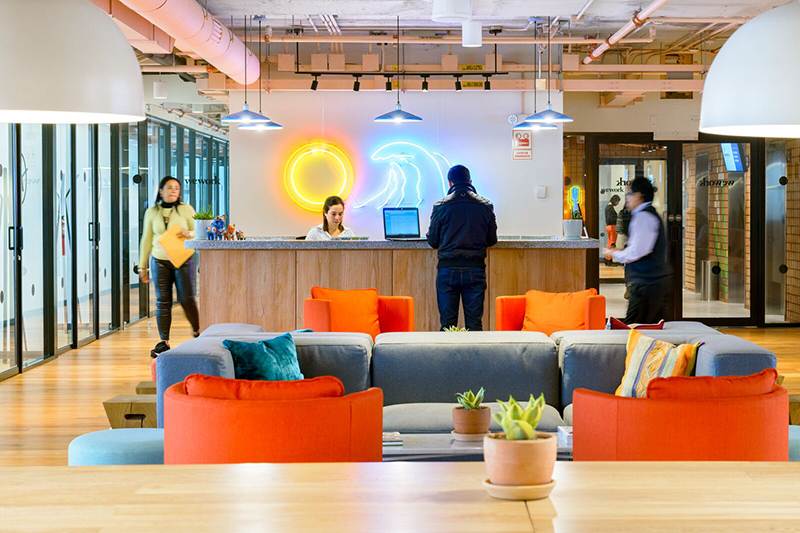Space is a powerful tool to foster engagement, inspire innovation, and drive productivity. But what exactly does an optimal space look like? In the Science of Space, we explore how the science of intentional design can turn any work environment into a holistic experience.
A sense of community is endemic to our humanity: It’s the feeling of identity, of belonging—the feeling that we matter and share a commitment to meeting one another’s needs. Because of this, many businesses have discovered the value in providing their customers with a community around their brand.
Providing a platform for customers to connect and discuss the products and services they use boosts brand exposure and credibility. What’s more, 67 percent of businesses gain insights about their in-market offering by listening to their brand community. Finally, increasing access and exposure to authentic, shared experiences helps decrease isolation and rally people around a shared topic or idea (i.e., a brand).
But, while businesses build community for their customers, loneliness is still on the rise for many individuals. In fact, one in five Americans say they feel lonely or socially isolated. Communities abound, but people feel more isolated—why? With the decline of traditional community institutions, the business focus on consumer communities has only filled some of the void. The missing piece: A renewed focus on the employees’ community experience.
At WeWork, we believe so strongly that community is the active ingredient that brings office space and technology to life that we’ve woven it into every aspect of our workplace experience. We see how the “vibe” and sense of community in an office shapes employees’ experience and their engagement in their jobs in a way that tangibly impacts the bottom line. Relationships between people are critical to employee satisfaction and output—so much so, that Gallup researchers have reported that having a best friend at work is positively related to the amount of effort employees expend.
But how is community created in the workplace? We see it as an interconnected ecosystem of design and people.
Creating workplace community starts with design
WeWork’s DNA was built on creating a coworking community for our members. When WeWork began, we were competing with the convenience of home and “third places”—a coffee shop, hotel, or airport lounge. We recognized the table stakes of delivering a “better than home” experience: The space needed to be welcoming, informal, flexible, and convenient. We also observed that while working from home or “third places” serves convenience, these experiences lacked that foundational human need for a sense of community.
Many organizations design each element of their office independently, without considering the holistic employee experience. However, when designed intentionally, community, space, and technology complement one another, becoming greater than the sum of their parts.
We’ve made bold choices to prioritize and reinforce community throughout the end-to-end workplace journey. The WeWork community team is positioned—literally and metaphorically—as the connective tissue of the workplace. As soon as you get off the elevator in any WeWork location, the community desk is the first thing you see—building trust from day one.

The overall design of each WeWork space reinforces this. We dedicate more space than the average office to the community experience by offering lounges, kitchens, and other common areas. Our corridors are narrower to encourage eye contact amongst passersby, and we even include open staircases to foster more connections between floors. We design each and every space type within our spaces to inspire intentional connective moments, whether it’s a quick brainstorm meeting or a large luncheon with peers.
But we must also add a layer of human connection
Design alone won’t foster a sense of community. That’s why we have a dedicated team. WeWork’s community managers are the stewards of our community philosophy. They are responsible for developing a strategy to bring the employee experience to life. How? By bringing intentionality to the intangible: weaving together experience design, event management, and facilities operation, all with a human-centric touch.
WeWork’s community managers listen to employees’ needs and ideas, then connect them to someone who can help. This person is not a concierge—they are a facilitator. WeWork has never outsourced these community team roles. That’s because they need to be full-time, personally invested employees who can build trust with members. WeWork, in turn, provides them with the budget and autonomy to create a thriving community.
In our enterprise spaces, community managers actively sense what employees want and need. Then they use these insights to enhance the employee experience—and, at times, share learnings with their senior leaders so that they can better understand their employees’ needs. With a finger on the pulse of both the business and the lived experience, community managers can adjust and tune big events and micro-moments to create a sense of belonging within companies or across buildings.

Take the use of food and drink to facilitate connections for example. Rituals around food form the basis of important human events and institutions and can help build interpersonal relationships and strengthen group solidarity. However, a study of eating patterns in working adults found that 72 percent of respondents rarely eat with others. Making time at the table together during a lunch break can be rare unless those moments are encouraged. Eating together may even influence collaboration among coworkers who would not otherwise have had contact with one another.
In this way, we consider sharing food an intentional means of creating community. Rather than leaving snacks and food out all day, our community managers design pop-ups and micro-moments that act as a nudging mechanism to bring people together for longer amounts of shared time.
Micro-moments matter. These little interactions form the basis of deeper interpersonal relationships. Often, we see organizations focus on the big milestones—but how can they design for the little moments as well? For example, is there a way to prompt conversation while teams wait in line for their morning coffee? Is there a way to inspire new thinking while they wait for the elevator?
All of these moments are levers that should be designed to serve and reinforce the broader organizational goals and to help employees feel taken care of, seen, heard, and valued. At WeWork, that’s where the community team comes in.
The future of community in the enterprise workplace
The WeWork community team doesn’t just focus on connecting people within one company—we help a multitude of companies network.
We see evidence of enterprises wanting to be closer to startups in order to drive innovation and new business outcomes. At WeWork, community managers will seed potential partnerships and business opportunities between such organizations—after all, they’re privy to the often unseen opportunities at the intersection of shared interests and physical proximity. We’ve also seen enterprises increasingly operating their businesses by co-creating with their consumer community or through more open networks: crowdsourcing ideas, creating incubators, labs, and more.

Ask yourself: Who’s seeing the big picture of community within your workplace? As organizations grow and evolve, our community managers are uncovering unexpected opportunities to knit together otherwise siloed teams’ interests and initiatives. Rather than bringing already connected team members together, they look for places to broker new connections. In fact, there’s no innovation without community. The sharing of knowledge and advice in formal and informal networks is recognized to be integral to successful innovation hubs.
WeWork’s community offering makes a case for treating employees as if they, too, were customers. If an enterprise truly wants to be a community-centric organization, they will have to foster their employee community in the same way and with the same care.
Josephine La Pietra is the global head of experience and community strategy at WeWork. Josephine’s experience is in research and human behavior, focused on understanding the psychology behind what drives how people think, act, and feel. Prior to WeWork, Josephine was in customer experience and brand strategy at Interbrand and human capital strategy at Morgan Stanley.
Claire Rowell is an applied researcher and strategist on the cultureOS team at WeWork. Using social research, Claire uncovers insights that help WeWork’s member companies and their employees transform how and where they work. Before joining WeWork, Claire was a workplace anthropologist at Plastarc. She has a background in cultural anthropology.






